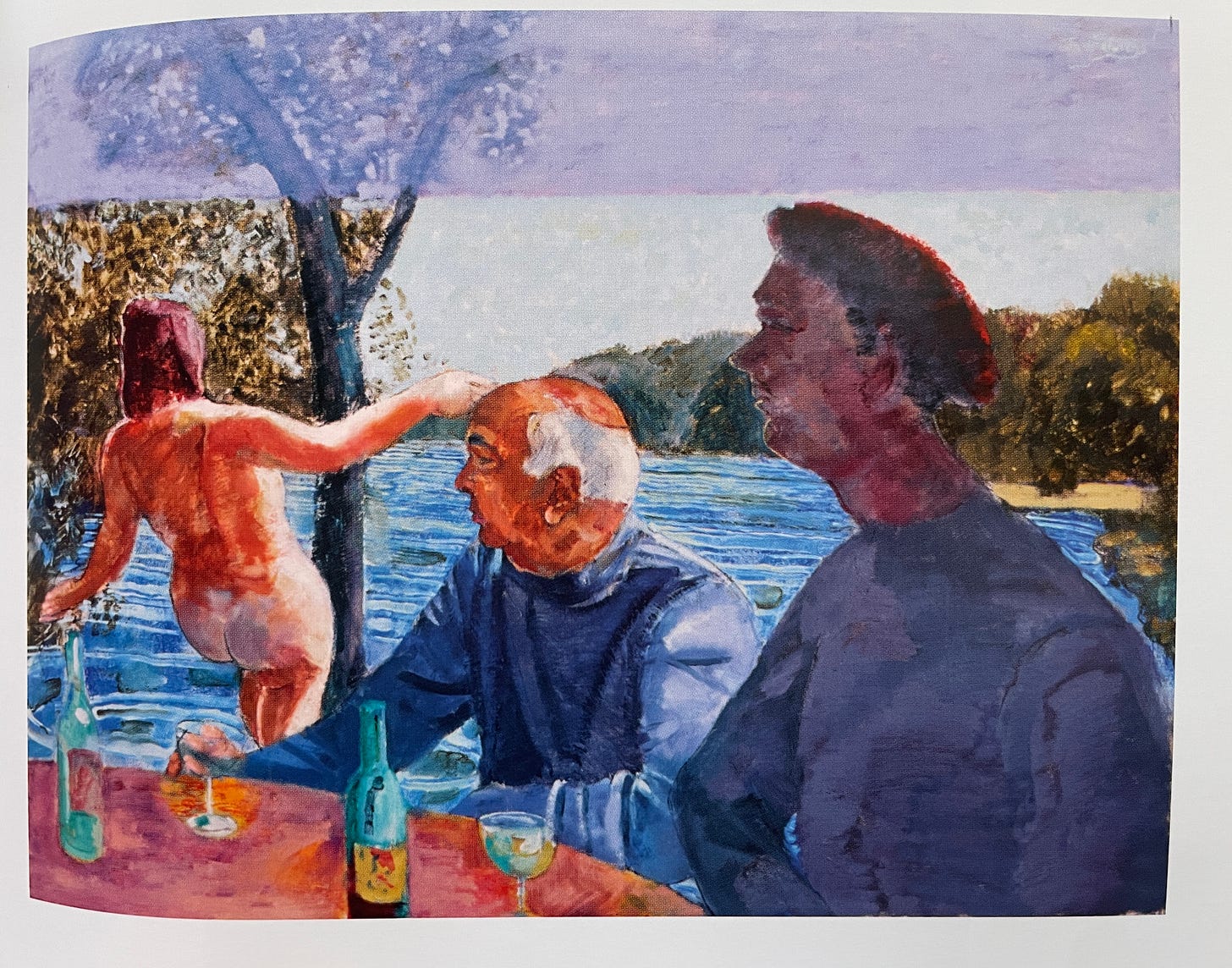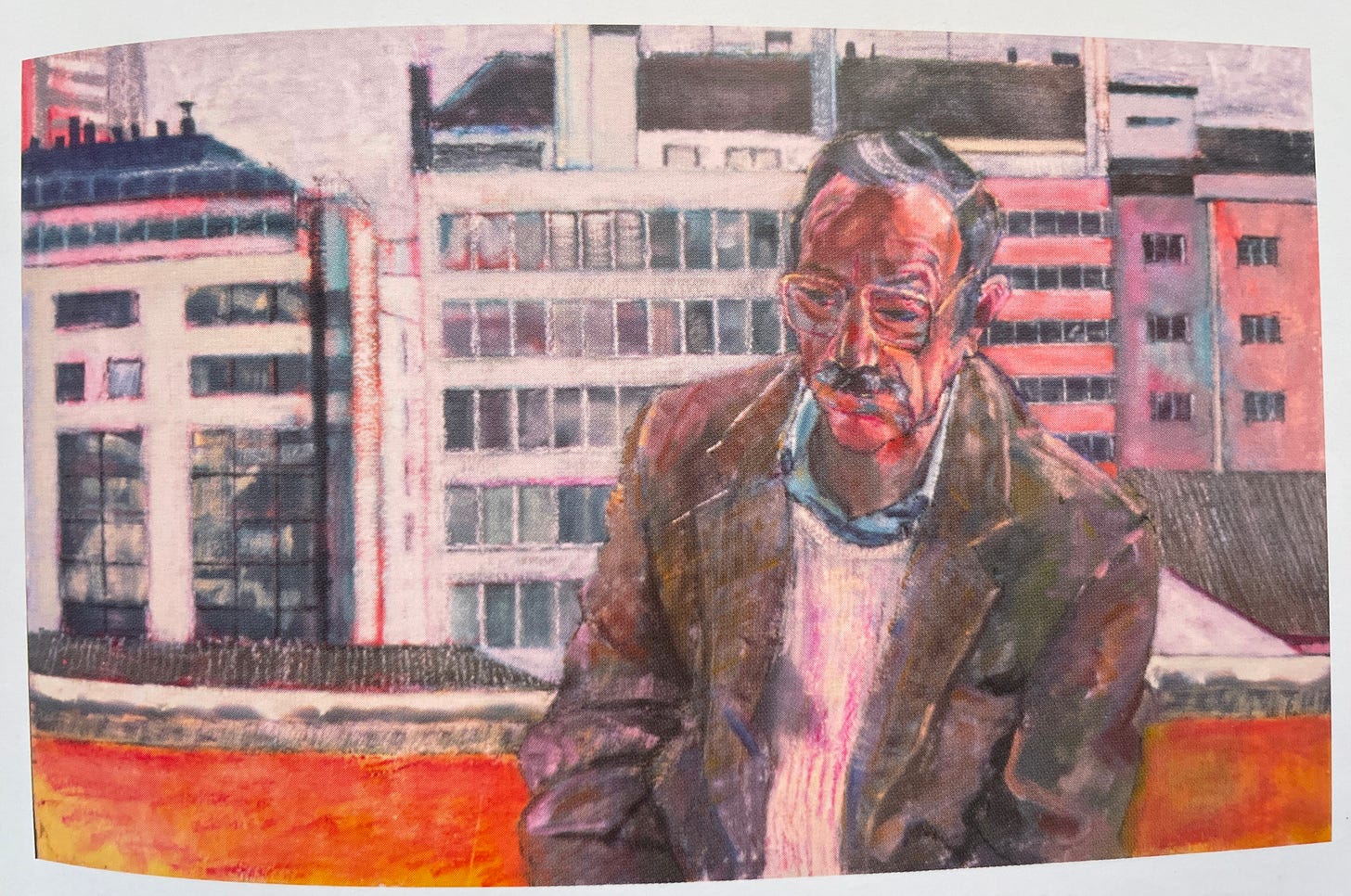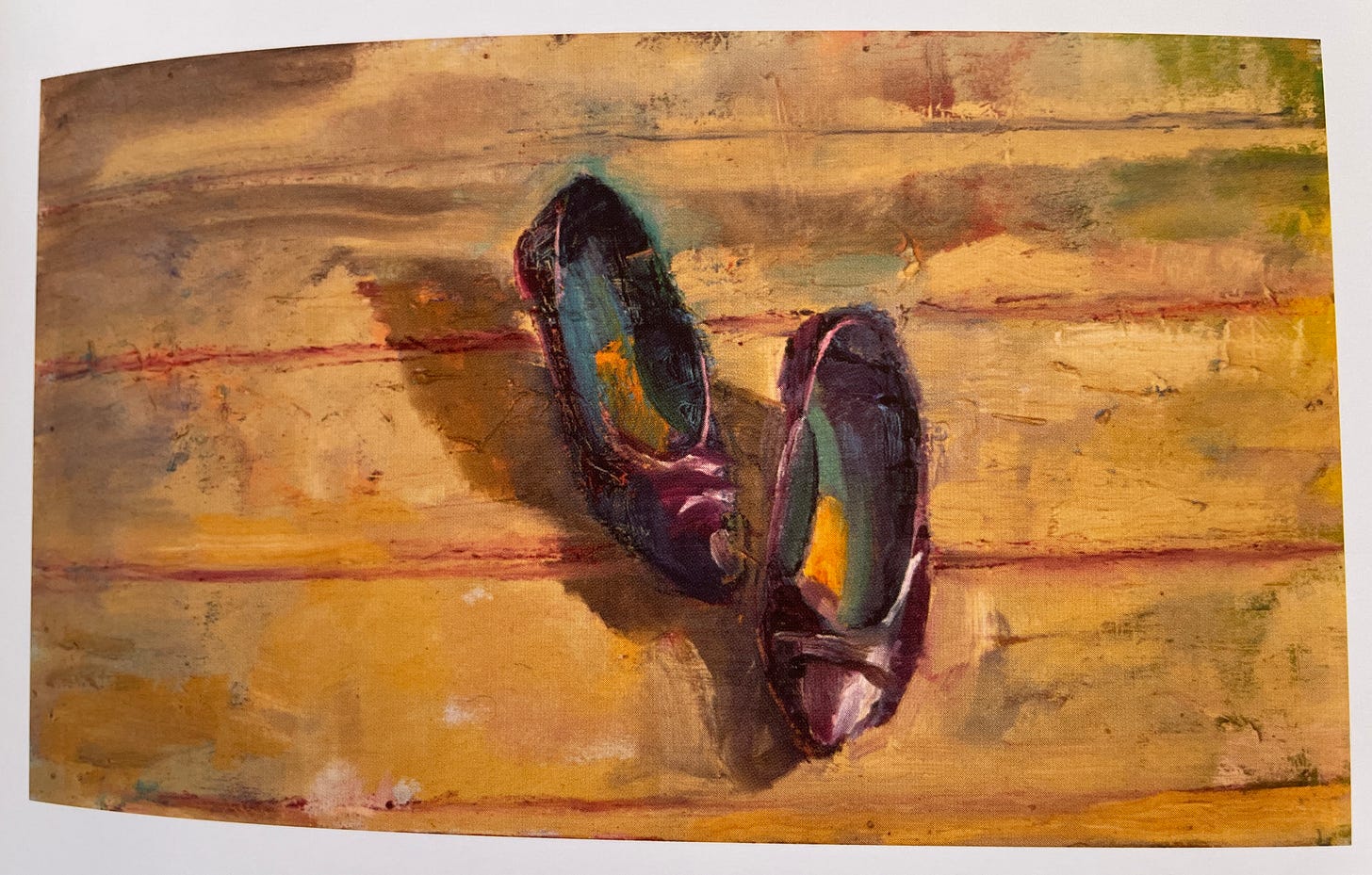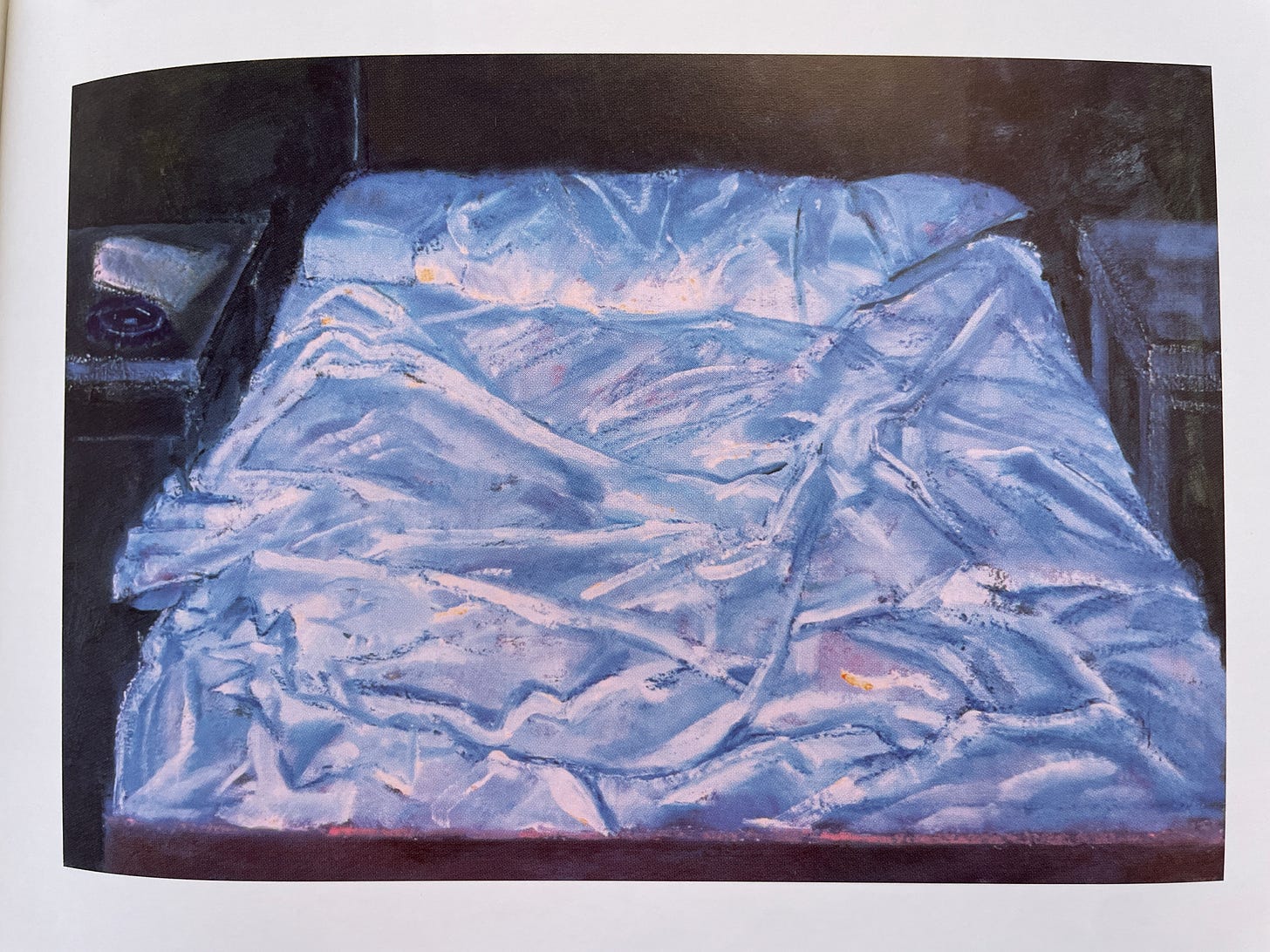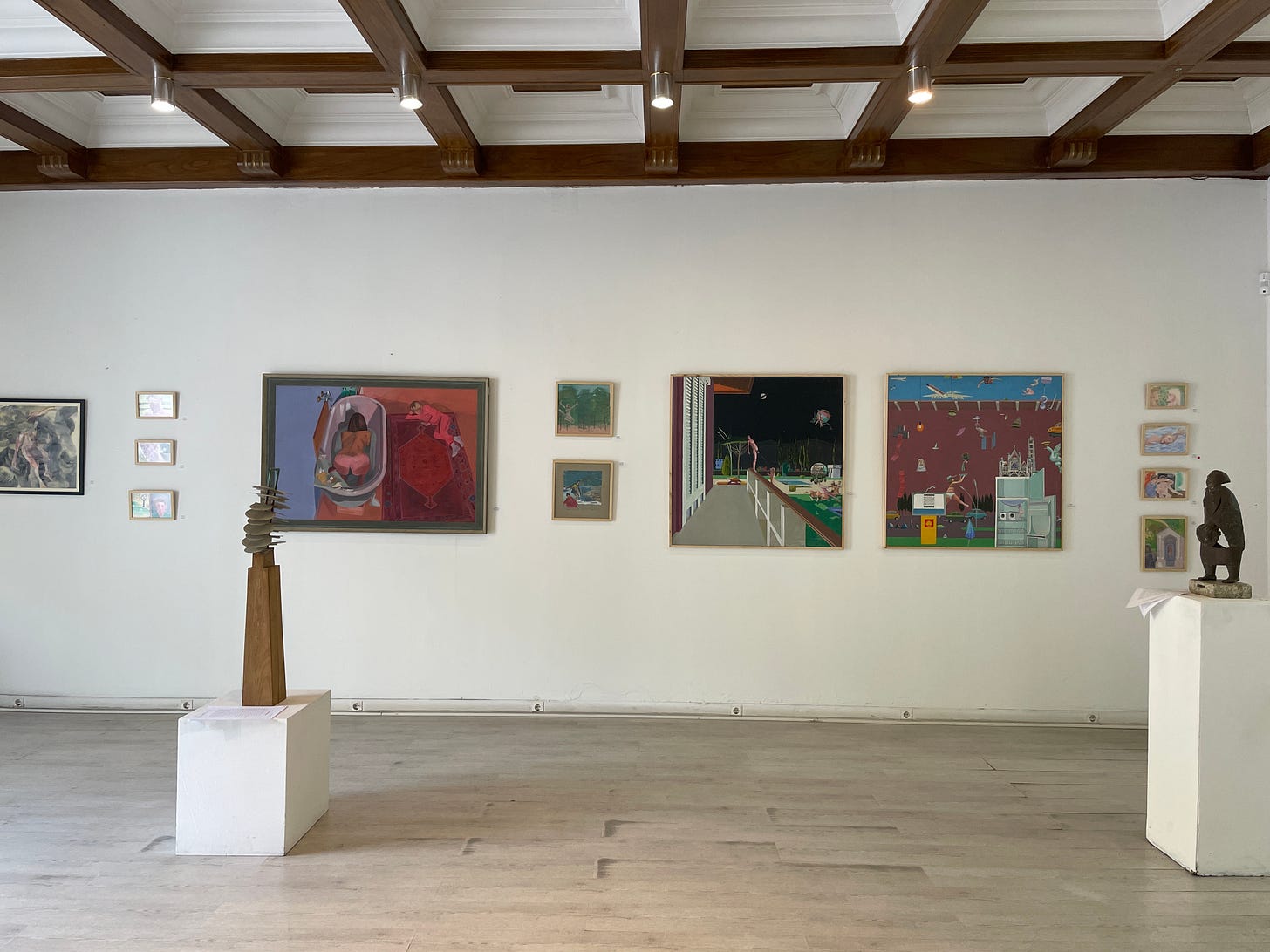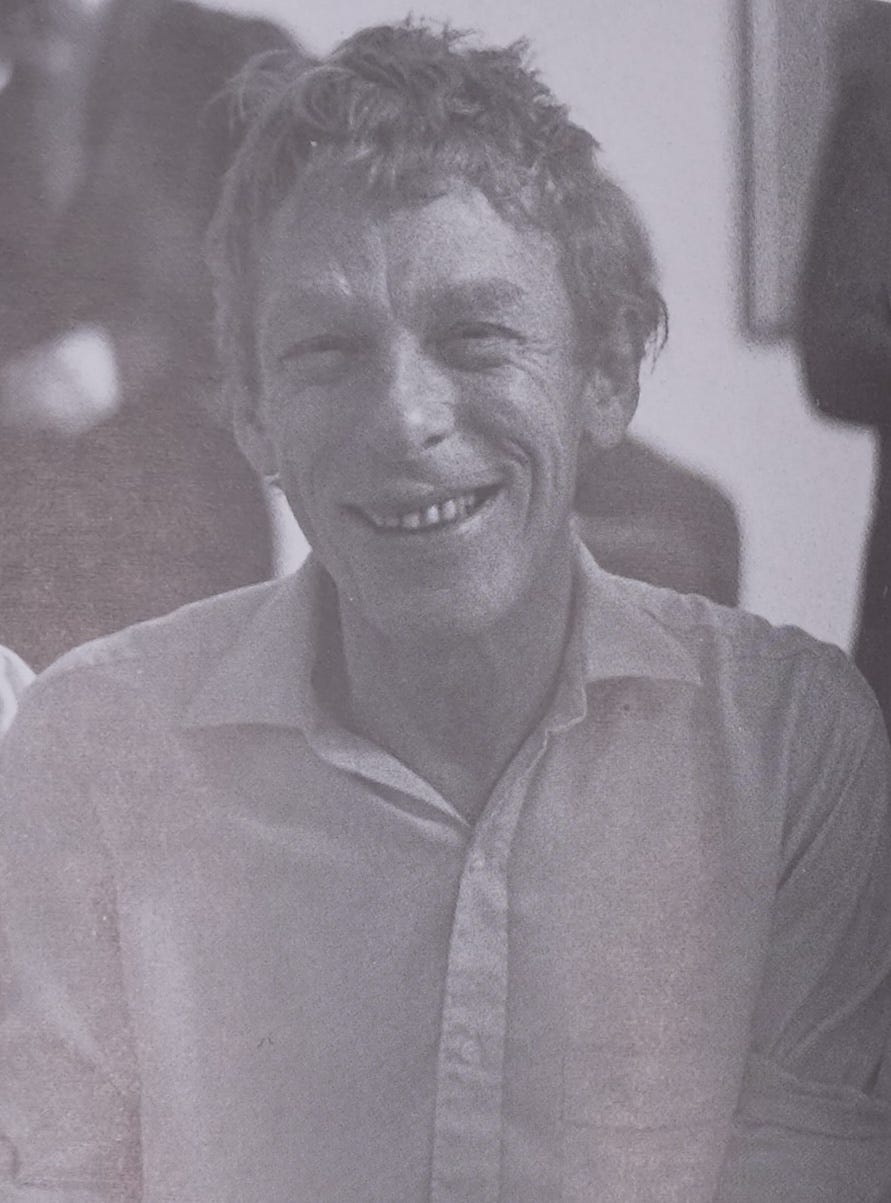Rúa Pintor Tim Behrens is located in Culleredo, a Galician town about 10 kilometers south of the coastal city of A Coruña. The small street honors Timothy John Behrens, an English artist and writer who lived and worked in this part of northwestern Spain for nearly 30 years. Behrens, who died in Coruña at age 79 in 2017, achieved something that is extremely rare for a foreign artist living abroad: He and his work were accepted and even celebrated in his adopted home.
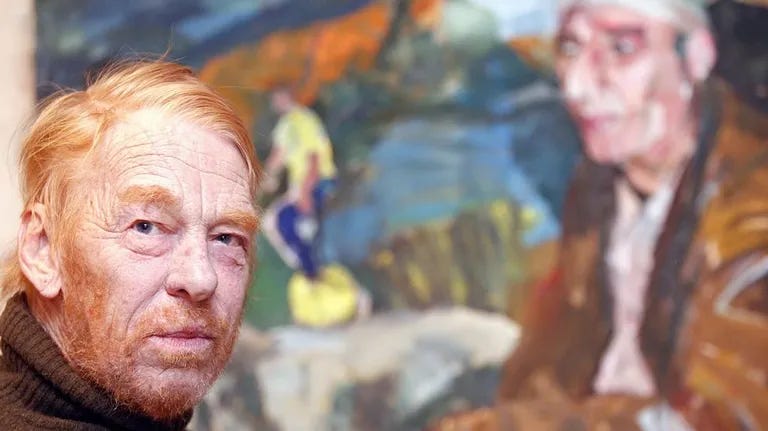
In Galicia, Behrens held numerous exhibitions, gained a circle of faithful collectors, published books, and was regularly featured in local news outlets as an extraordinary and valued member of the Coruña arts scene. Appreciation for Behrens also extended to area leaders: Francisco Vázquez, the mayor of Coruña from 1983 to 2006, said that the artist’s presence in his city was “one of the greatest gifts we could have ever received,” and former Deputación da Coruña president Salvador Fernández Moreda called Behrens "gallego de adopción."
Outside of Spain, Behrens is best known as a close friend and disciple of the painter Lucian Freud. Through Freud, the young artist became a member of the School of London, a group of artists that also included Mike Andrews, Frank Auerbach, and Francis Bacon. Though these associations followed Behrens for the rest of his life, Galicia gave him the space to define himself as an artist on his own terms, away from the long shadow of his illustrious beginnings. And for that, Behrens was supremely grateful.
“I chose to live in Spain and not in England, surrounded by Spanish rather than English people,” Behrens said in 2003. “I’ve lived here longer than anywhere else I’ve lived .... Painting is a means of communication. Inasmuch as painters paint ‘for’ anyone, I’d like to paint for the people I see every day, who are Spanish people. To put it another way, I’m conscious of a great debt to the Spanish, which I’d like to repay in my favourite coinage, painting.”
Behrens’s love of painting came early. Born in London in 1937, he grew up in a cultured, well-to-do banking family. His father collected art and took his son to visit the city’s West End galleries, which were then dominated by French art. “At the beginning of the ‘50s, London was almost completely under [the] thumb of Paris,” Behrens later recalled. Classes at the prestigious Eton College were of little interest to the young artist, and he promptly made his escape:
“At 16 I was fed up with public school. In defiance of my father, who wanted me to go to university to continue with my specialist subject, classics, I took my recent pictures to a London art school. Surprisingly — it wasn’t the right time of the year to apply — they accepted me. I was going to be the youngest student of the famous Slade School of Fine Arts.”
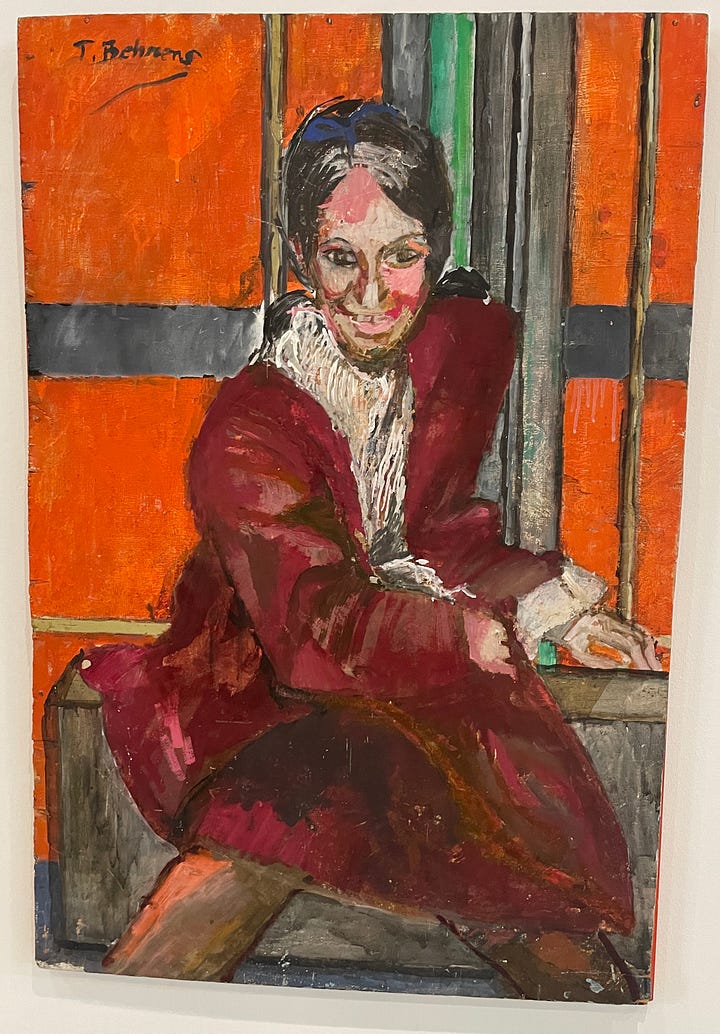
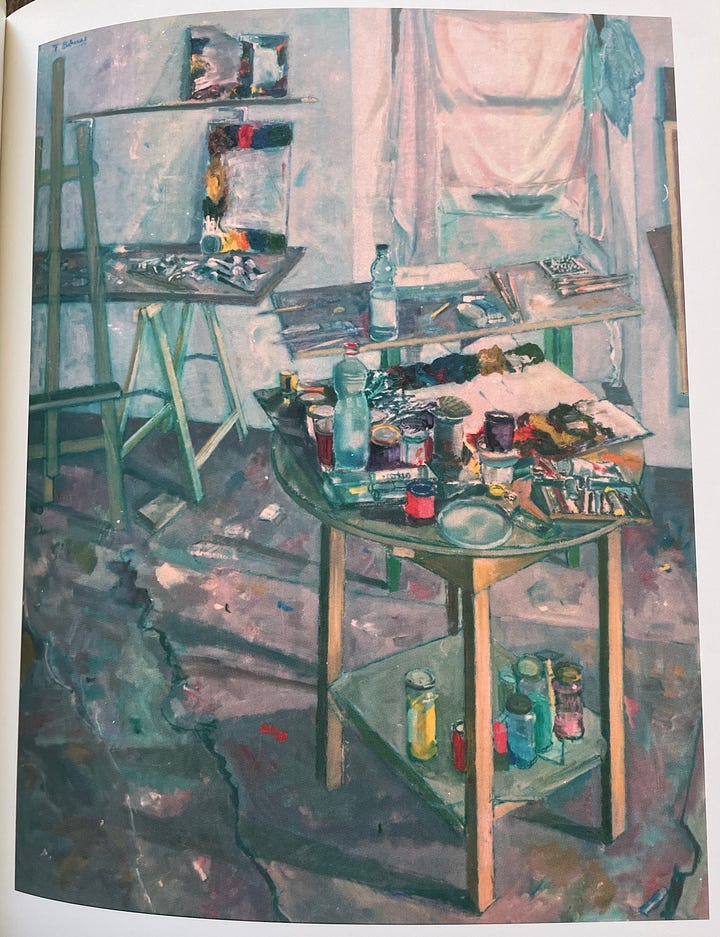
In 1953, Behrens joined classmates like Paula Rego, Craigie Aitchison, and Michael Tyzack at the Slade. A year later, Freud, then a 33-year-old up-and-coming artist and visiting teacher, asked Behrens to model for him. Freud quickly became a pivotal figure in the younger artist’s life. “For 8 years we saw each other practically every day, not only as painter and model but as intimate friends outside the studio too,” Behrens reflected years later. “I now imagine that he needed a protégé as much as I needed a protector.”
Among Freud’s portraits of Behrens is “Red Haired Man on a Chair” (1962-1963), a painting that caused a stir when it sold at auction in 2005 for over 4 million pounds and set a new record for Freud. By then the men had long parted ways, or in Behrens’s words, Freud “cast me out of the nest, as birds do.” Behrens, who was unapologetically himself in his writing and interviews, defiantly responded to the lucrative sale of Freud’s portrait of him this way: “It disgusts me that a painting can cost more than a house.”
The rupture with Freud was followed by a move to Italy in 1969. Behrens worked in Tuscany for nearly a decade, but found himself drawn to Spain. After exhibitions and projects in Barcelona and Marbella, he settled in Galicia with his third wife Diana Aitchison and their son Harry. (Diana is the niece of Craigie Aitchison and a wonderful artist in her own right. I met her a few years ago at the Centro Internacional de la Estampa Contemporánea in Betanzos, where she works each week. She made this article possible, and I hope to write about her and her work soon).
In Galicia, Behrens painted prolifically, producing sensual works in searing colors of compelling psychological depth. At the center of his work is the body, which is charged with an unsettling energy and emotion that the painter manages to capture time and time again. Even canvases unpopulated by people — scenes of an unmade bed or a well-worn reading corner, for example — strongly suggest a human sense of presence, desire, and feeling. Behrens’s art bravely takes on subjects drawn from real, lived experience.
Nowadays the artist’s legacy lives on in the street in Culleredo, in photos of him in Coruña cafés, in works by and of him, and in the exhibition currently on view in his adopted hometown. Behrens once said that “Painting is an offering from the painter’s own heart.” Galicia is fortunate to have received that gift.



